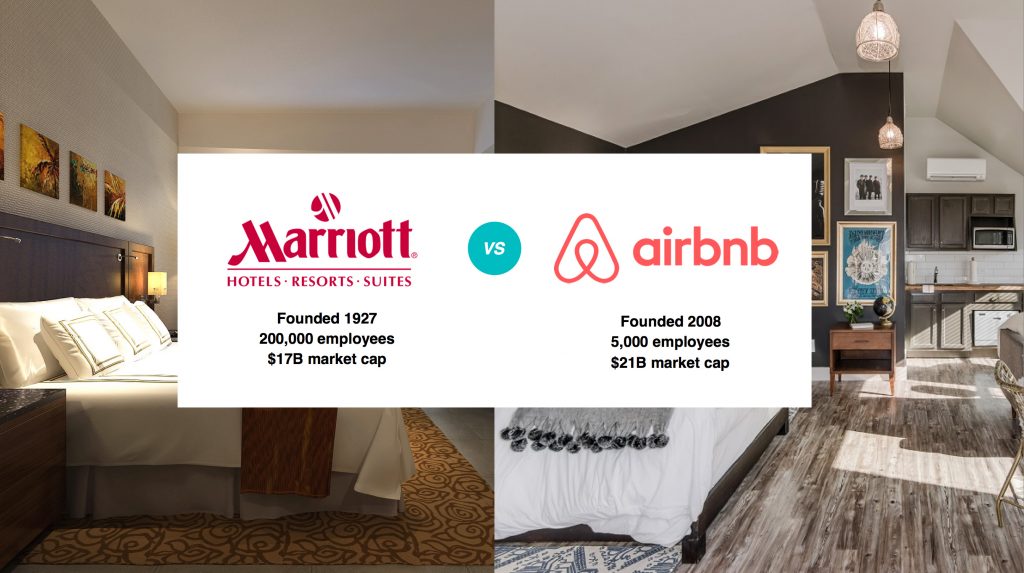
7 min read
The 3 Essential Ingredients of a Successful Platform Business
The 3 Essential Ingredients of a Successful Platform Business
You probably don’t need to be convinced of the potentially enormous value of a platform business. Just take a look at Facebook, Twitter, Amazon, Netflix, Paypal, Reddit, Apple App Store, the list goes on. The hyper-scalable business model clearly speaks for itself.
What’s less straightforward is how to actually succeed when launching a platform-based digital strategy.
Continue reading for practical insight on how to implement platform-based digital transformation that scales:
- The difference between a pipeline business and a platform business
- The three main ingredients of successful platform businesses
Is your sales process tedious for customers and costly for your business?
We’re seeing a need for digital transformation among established companies with complex sales processes. If that’s you, tune in to this recording of our live webinar and learn how to scale your business through automated sales.
Automating Sales Processes to Scale (A Practical 3-Phase Strategy)
Free Webinar Download: Understand what drives sales automation, how to identify friction in the sales process and practical ways to increase sales velocity with technology.
Kevin Hurwitz and Deanna Dial will discuss how to differentiate your business, rapidly scale top-line revenue, and increase profits by reducing friction in the sales process. Download a recording of the live webinar here.
What Is a Platform Business?
>> Learn more about how you can own your industry with strategic platform development.
A traditional business structure, also referred to as a “pipeline,” creates value in a linear fashion with internally employed staff and internally owned products or assets. Platforms, on the other hand, create value by facilitating interactions between external producers and consumers.
While pipeline businesses are responsible for creating their own value internally, platform businesses get to ride the wave of people from the outside creating the value for them. Take a look at Airbnb and Marriott, for example.

Marriott vs Airbnb
The hotel chain Marriott was founded in 1927, has around 200,000 employees, and has a $26.4 billion market cap.
Airbnb is a successful platform business that allows people to rent out their private spaces. It was founded in 2008, has an estimated 5,000 employees, and an estimated $24 billion market cap.
Although these two lodging and hospitality companies have roughly the same market value, Airbnb reached that number ten times faster than Marriot, and with only 2.5% of the number of people that Marriott currently employs!
How did Airbnb accomplish this feat? It was built on a platform-based business model that relies on external producers to assume the bulk of the workload.
In contrast, Marriott is responsible for providing their customers with rooms, furnishings, utilities, maintenance, security, and so on. Airbnb is simply responsible for the management of their platform, ensuring it runs smoothly for external producers and consumers. As a result, Airbnb incurs far fewer expenses and a much greater ROI.
The 3 Essential Ingredients
Not everyone who’s tried has struck gold with a platform business. So what makes Airbnb and others so successful and at such an unprecedented rate? There are essentially three main ingredients to the formula for a successful platform business.
- Information Enabling In a nutshell, information enabling refers to making products smarter, providing contextual awareness, personalization, and better search capabilities via the collection and use of metadata. These features reduce much of the friction that producers and consumers encounter, providing a better user experience on both sides.One example of an information-enabled experience is the use of Google Maps to find the best route to get to your favorite restaurant. The friction you may be experiencing in that situation could be rush-hour traffic, or not knowing exactly where you are, or how to get to where you need to go.Google maps can reduce that friction by enabling you with information about your current location, travel time and distance to your destination, and the best route to get there. It relies on metadata collection and synthesis to provide you with the information you need to get to your restaurant as quickly and safely as possible.
Any industry in which information-enabling can be used to reduce an area of customer friction and improve a customer experience is an industry that is ripe for disruption.
Is there a way you can information-enable your products or services to create more value for your customers?
- Leveraged Assets For a successful platform business, it’s not about owning assets. It’s about having access to assets and resources that exist outside the company, then finding innovative ways to leverage those resources through technology.Back to the Marriott vs Airbnb example, Marriott owns around 5,700 properties in 110 countries, while Airbnb owns zero. Marriott had to acquire all that land, build structures, and market and manage those properties. Airbnb just had to build a platform to attract people looking for places to stay as well as people to host them on their own property.Talk about capitalizing on the cliche “if you build it, they will come!”
To tap into this component of a successful launch, you need to ask yourself the following question:
What dormant assets or talents do your customers, employees, partners, suppliers, distributors, and investors own, and how could those assets be leveraged?
- Social Sharing and Feedback This component of a successful platform business launch is about creating symbiotic relationships with your customers via their social media networks.The objective is to earn exposure to your customers’ social networks by offering them an incentive to get the word out. There are countless creative ways to establish this sort of mutually beneficial relationship with customers and their social networks. Here’s one:Warby Parker is an eyewear company that effectively motivates its customers to share photos of their product on social media. How? They help their customers see that sharing photos of the eyewear can actually benefit them in a significant way.
After evaluating which frames would work best with a particular customer’s features, Warby Parker sends that customer five pairs of frames to try. Along with the frames, they send instructions for the customer to take a selfie wearing each frame and upload each photo to social media, asking their friends to vote on their favorite. The customer gladly complies, eager to get feedback from others in their network about which pair to purchase. This clever incentive results in massive social media exposure for Warby Parker.
Can you think of ways to entice your customers to share their network with you by providing them with some sort of benefit for doing so?
What About You?
The unprecedented shift we are seeing today from traditional business models to hyper-scalable platform-based businesses is made possible because of three recent technological advancements:
- Internet connectivity is ubiquitous
- Computer power has drastically improved and is also much more affordable now
- Today’s mobile-social era means we carry the internet and our social networks in our pockets
While you may not be about to launch a new business, there are almost certainly areas where you could capitalize on platform principles to access new sources of value. And today’s technological conditions mean this could be the best time to do it.



Leave a Reply